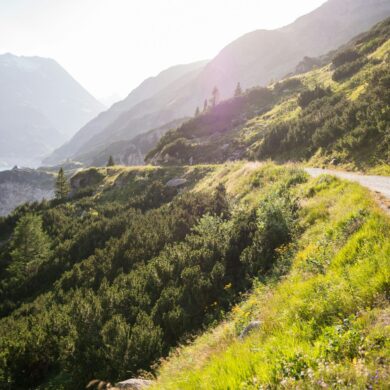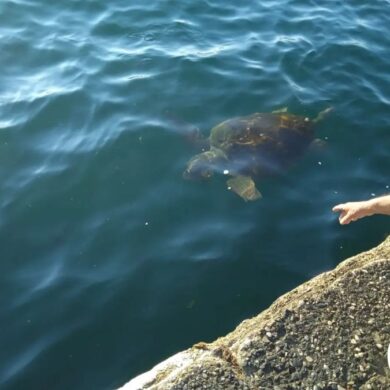With their historic architecture, beautiful scenery and culture without the crowds, these charming European cities are perfect for a late summer/early autumn getaway
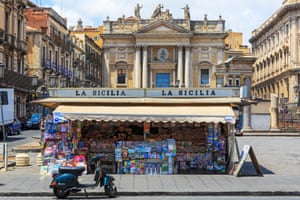
Catania, Sicily
If you want a quick resumé of Catania’s character, look no further than the brooding, explosive mountain that looms right over it: Etna. The university city on the east coast, overlooking the Ionian Sea, can be intense, chaotic and beautiful.
At its heart is a Unesco-listed old quarter full of towers and squares, relics of a competitive building spree in the 18th century, when Catania was trying to outdo its rival, Palermo. The Piazza del Duomo is the centrepiece; other highlights include the Teatro Massimo Bellini, as lavish a production as any Bellini opera – the man himself was a local lad. And yet the real must-see is nothing historical at all, but the riotous fish market, held every weekday morning. Grab a seat at one of the surrounding restaurants and tuck in to the city’s signature dish, pasta alla norma (with tomatoes and aubergine), named, naturally, after a Bellini opera.
The sandy beach south of the city – lined with lidos and discos – quietens down after August, but the sea remains warm into early autumn.
Where to stay Ostello degli Elefanti(beds from €22.80) has a great locationand a roof terrace.
Getting there EasyJet flies from Bristol, Manchester, Luton and Gatwick, from around £80.
Belgrade, Serbia
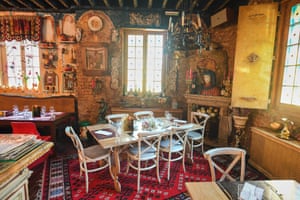
A recent Post Office report on Europe’s unsung cities found that Belgrade is the best-value destination for a city break, at £149 for two nights for two (including accommodation, food, drinks, sightseeing and city travel, but excluding flights) – 12% cheaper than runner-up Krakow. Belgrade might not be Europe’s most beautiful city but it has a striking setting at the confluence of the Danube and the the Sava, a few architectural gems and impressive monuments, and the best nightlife in the Balkans.
This summer, the National Museum reopened after a 15-year closure: it covers a huge range of Serbian history, from the Paleolithic period to 20th-century art, and is free on Sundays (closed Mondays). Mocab, the Museum of Contemporary Art, reopened late last year, after a decade, and has free entry on Wednesdays (closed Tuesdays).
If the sun is shining, locals head to Ada Ciganlija, Belgrade’s “seaside”. This forested peninsula on the south bank of the Sava has a string of sandy beaches, and activities such as hiking and kayaking. It is worth crossing the river to the picturesque suburb of Zemun, a separate town until 1934, to wander its winding, cobblestoned streets. For dinner, the super-kitsch Lorenzo Kakalamba serves lamb shank slow-roasted over hot coals, while Ambar serves modern Balkan small plates. Hang out at Cetinjska 15, a group of bars and clubs clustered around a derelict brewery.
Where to stay The Belgrade outpost of French hotel chain Mama Shelter(doubles from £67) opened in March, and has a rooftop restaurant and bar.
Getting there Wizz Air flies from Luton to Belgrade, from £51 return.
Kaunas, Lithuania

Lithuania’s second city is Europe’s capital of culture for 2022, and no wonder: it is full of museums, galleries and notable architecture. Kaunas was the nation’s capital from 1920-40, and this golden age left a legacy of scores of modernist buildings, such as the monumental Christ’s Resurrection Church. But it’s not all 20th-century sights: there is a 14th-century castle in Santaka Park, at the confluence of the Nemunas and Neris rivers, and a graceful 16th-century town hall, known as the White Swan.
The most unusual attraction is perhaps the Devil’s Museum, which has a collection of 3,000 satanic figures from 70 countries, while Mikalojus Konstantinas Čiurlionis National Museum of Art is devoted to Lithuania’s pioneering abstract artist. Kaunas also boasts the country’s oldest funicular railways, 1930s Žaliakalnis and Aleksotas, both of which afford panoramic views of the city. Vilniaus Street is the heart of the cobbled old town, full of restaurants and bars, while pedestrianised Laisves Avenue in the new town is best for shopping. Cold beetroot soup (saltibarsciai) is a summer favourite, but also try traditional game dishes at Medziotoju Uzeiga, modern Lithuanian cooking at Uoksas and local craft beer at Hop Doc. Open Kitchen, a street-food market on Nemunas island, runs every Thursday into September. On the outskirts of town, the Kaunas Lagoon park is a lovely place to chill, rent a boat or walk around.
Where to stay The Hof Hotel is a small, central hotel just off Laisves Avenue, (doubles from £40).
Getting there Ryanair flies from Bristol, Edinburgh, Luton and Stansted from £20 return. Wizz Air flies from Luton from £48 return.
Košice, Slovakia
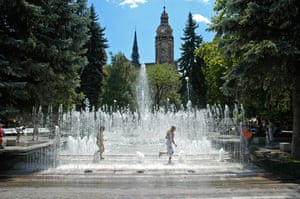
Slovakia’s second city (pronounced Ko-shitse) is close to both Hungary and Ukraine, on the river Hornád, and features everything from gothic to art nouveau architecture. Given a boost by its stint as European Capital of Culture in 2013, the bouyant, often unconventional, cultural scene continues to bloom and its nightlife is young and spirited, thanks to the sizeable student population and influx of people from nearby towns and villages looking for fun at the weekends.
The elongated main square, Hlavná, has lots of colourful three-storey buildings, many now cafes or bars, which are lively late into the summer. Tabačka Kulturfabrik, a buzzy bar and bistro, often has live music (Gorkého 1068/2). Within walking distance are the singing fountain, the impressive gothic St Elisabeth Cathedral and adjacent St Urban’s Tower, as well as medieval Mikluš prison.
For a fun tour hire an old Skoda with guide and get out to former communist-era relics, like the fallout shelter and magnesite factory.
There are some unusual options for art lovers, too, including the Mihal Gallery in the Muza Hotel, which has a small collection of Andy Warhol originals – visitors are welcome but call ahead to arrange.
Where to stay Central apartments from €99 for two (cityresidence.sk).
Getting there Wizz Air flies from Luton, from £40 return. From next spring, Ryanair flies from Southend.
Bari, Italy
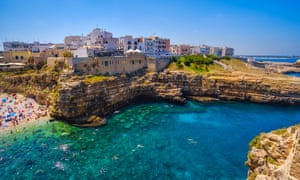
With a warren of an old town– the Bari Vecchia– and a roster of ancient buildings, Bari is a joy for those who simply like to wander – and soak up late summer sunshine. Look for the 11th-century Basilica di San Nicola, the 12th-century cathedral and the recently restored Teatro Petruzzelli, which hosts regular opera and ballet performances.
The so-called new town is actually quite old, too, having been laid out on a grid pattern by Napoleon’s brother-in-law, Joachim Murat, King of Naples. Pedestrianised Via Argiro and Sparano are well-known shopping areas. Great-value cuisine is another good reason to visit– street food includes Maria’s legendary sgagliozze (deep-fried polenta balls, Str delle Crociate), while on via del Arco Basso women sell handmade pastafrom tables in the street. If you want all this grub on your doorstep, you’ll have to accept what the old town is: noisy and fun.
There are decent sandy and pebble beaches in Bari too, and some lovely resorts like Polignano a Mare just down the coast. And the weather is warm long into October.
Where to stay Borgo San Nicola has doubles from €50 a night or out in the new town Olive Tree Backpackers (double from €48) is lovely.
Getting there EasyJet flies from Gatwick from £55 return, Ryanair flies from Stansted and (until late October only) Liverpool, from £40 return. Wizz Air flies from Luton from around £50 return.
Podgorica, Montenegro
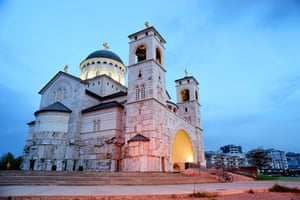
You may remember this city as Titograd, or perhaps Ribnica, Doclea or Zeta. Podgorica is one of Europe’s newest capitals but its history, under various monikers, goes back to the second century BC. Nowadays it is a hotch-potch of architectural styles, including some atmospheric fragments of Ottoman days and the Austro-Hungarian empire.
It may look small and unprepossessing at first sight but, with a bit of determination, you’ll discover a vibrant cafe scene, good local food and drink, plus some lovely walks around town. Try boza, a low-alcohol wheat beer whose origins date to the Ottoman era, at the Korzo bar in the city centre. Feto is the place for some excellent cheese and spinach burek, while Pod Volat attracts a local crowd for its ćevapi, a kind of skinless minced meat sausage.
Summer stretches into October and, with the Adriatic Sea only 50km away and beautiful mountain scenery on the doorstep, excursion possibilities are excellent.
Where to stay Montenegro Hostel is basic but affordable, with beds from €9 and doubles from €25. It also organises tours.
Getting there Ryanair flies from Stansted from £64 return.
Ohrid, Macedonia
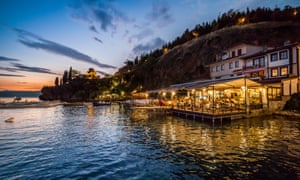
Ohrid is landlocked Macedonia’s “seaside” city. The old town tumbles down the hill to the banks of Lake Ohrid, with its boardwalk and beaches. The cobbled streets are crammed with churches and traditional houses, and the hill is crowned by the ruined Samuil Fortress. Other architectural sights include a 2,000-year-old amphitheatre and the photogenic 13th-century St Jovan Kaneo church perched on a cliff overlooking the lake.
After exploring the town and lakeside, take a boat trip to St Naum monastery and the nearby springs; go diving at the Bay of Bones, an underwater archaeological site; or trek in the mountains of the Galičica national park. Back in town, the terrace at Letna Bavča Kaneo is a good place to try fried plasnica (small fish eaten whole, like whitebait). For drinks, there are beach bars, including Ovreche and Cuba Libre, and grungier late-night joints such as the Jazz Inn.
Where to stay Sunny Lake Hostel (dorms from €10) has a garden and lake views; Villa Arte (doubles from €40) has 18 minimalist rooms and artwork by the Macedonian surrealist Vasko Tashkovski.
Getting there Wizz Air flies from Luton to Ohrid until the end of October, from £40 return.
Preveza, Greece
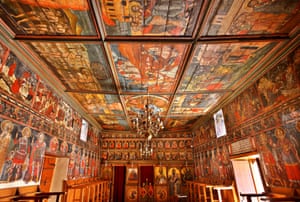
With its ancient cobbled streets and lovely waterfront, it’s a shame that a lot of visitors whizz straight past Preveza. The small town in Greece’s far north-west has a commanding position at the mouth of the Ambracian Gulf. Its tumultuous history has resulted in an architecturally rich settlement, with gems such as the Kastro Pantokrator castle, an early 19th-century fort, relics from Venetian and Ottoman periods and the all-painted church of Agios Athanasios.
An hour’s walk from town is one of Europe’s longest sandy beaches, 25km Monolithi, with camping available (campingmonolithi.gr). For great seafood, try Taverna O Kaixis, just off the waterfront, or the slightly pricier Amvrosios. There is a huge choice of day trips: for nature, try the Acheron river canyon and Amvrakikos Wetlands (to spot pelicans); for ancient history, the mosaics and odeon at Nikopolis, a few kilometres north of the city, and the ruined city of Cassope.
Where to stay Captain’s House Boutique Hotel (doubles from €60) was built in 1896, the year of the first modern Olympic Games, held in Athens. The captain refers to original owner, Captain George Potamianos, whose eldest son bought the place in 1973.
Getting there EasyJet flies from Gatwick and Manchester until late October, from £50 return.
Grenoble, France
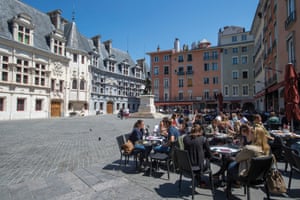
With the Alps on its doorstep, Grenoble is often seen as a city to pass through en route to a great outdoors adventure (hiking in summer, skiing in winter). It is, however, worth a visit in itself. The Musée de Grenoble houses a world-class art collection featuring Bonnard, Modigliani and Miró, while the Magasin, 2km out of town, is a leading contemporary exhibition space built by Gustave Eiffel.
The city has a large student population, which means plenty of good cafes, bars and restaurants – and with temperatures often still pleasant in autumn you can maybe dine alfresco, soaking up that mountain scenery. Try Lo Zafferano, whose unassuming frontage and small interior belie its big reputation and top-notch French-Italian cuisine. For a lively, boozy night out try student-filled bar Le Tord Boyaud on Rue Auguste Gaché.
The oldest cafe in Grenoble, Café de la Table Ronde (also thought to be the second oldest cafe in France), founded in 1739, is a good spot for a coffee on the terrace or dinner of classic French fare.
The spherical 1970s cable cars, known as “the bubbles” connect the town to an 18th-century fortress at the top of La Bastille hill, which has panoramic views over the city and surrounding mountains.
Where to stay The central Hotel Splendid (doubles from €72) has a retro style.
Getting there Ryanair flies from Stansted from £20 return until late October, flights then resume in December (other airlines also fly to Grenoble during the ski season).
Pula, Croatia
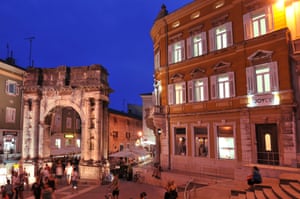
Pula, a city on the southern tip of the Istrian peninsula, has an astonishing array of Roman remains. The most jaw-dropping is the first-century amphitheatre; others include the Temple of Augustus and the Arch of the Sergii. More recent attractions include Lighting Giants, a light installation featuring the cranes at the Uljanik shipyard (dusk-10pm, free).
Your money will go further here than in touristy Dubrovnik.Restaurant Kantina, in the cellar of a 19th-century villa, is a cosy place to eat homemade Istrian pasta, seafood and meat dishes, accompanied by delicious local wine (Istria is a good wine region). Drink at Scandal Express, a small cafe-bar with a big terrace.
There are no beaches in central Pula, but it’s a short bus ride to those on the Verudela peninsula, or to Fažana, from whence you can hop on a boat to car-free Veli Brijun, one of the 14 Brijuni islands. Here, you can happily spend a half-day wandering through carefully tended parkland, complete with deer and peacocks, and drinking coffee in the shade of pine trees. In the early 19th century, it was a popular health resort and now makes a pleasant place to wander.
Where to stay The school where James Joyce once taught English is now the Boutique Hostel Joyce (doubles from €75), a bright, central hotel (not a hostel, despite the name).
Getting there Until late October only, Ryanair flies from Stanstedfor £45 return, and easyJet and Jet2 fly to Pula from a number of UK airports, both from around £50 return.
Looking for a holiday with a difference? Browse Guardian Holidays to find a range of fantastic trips


